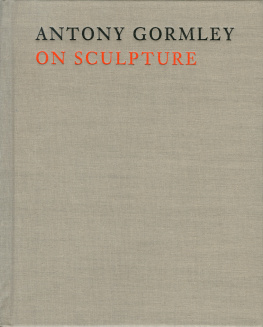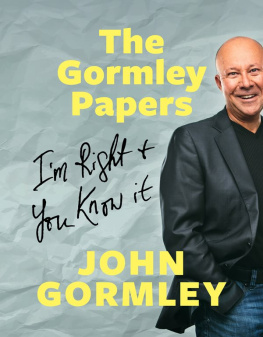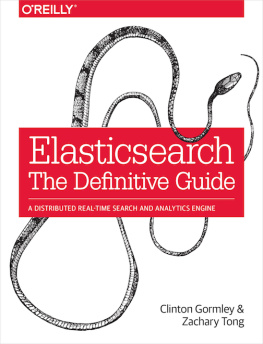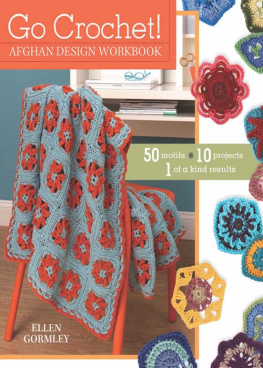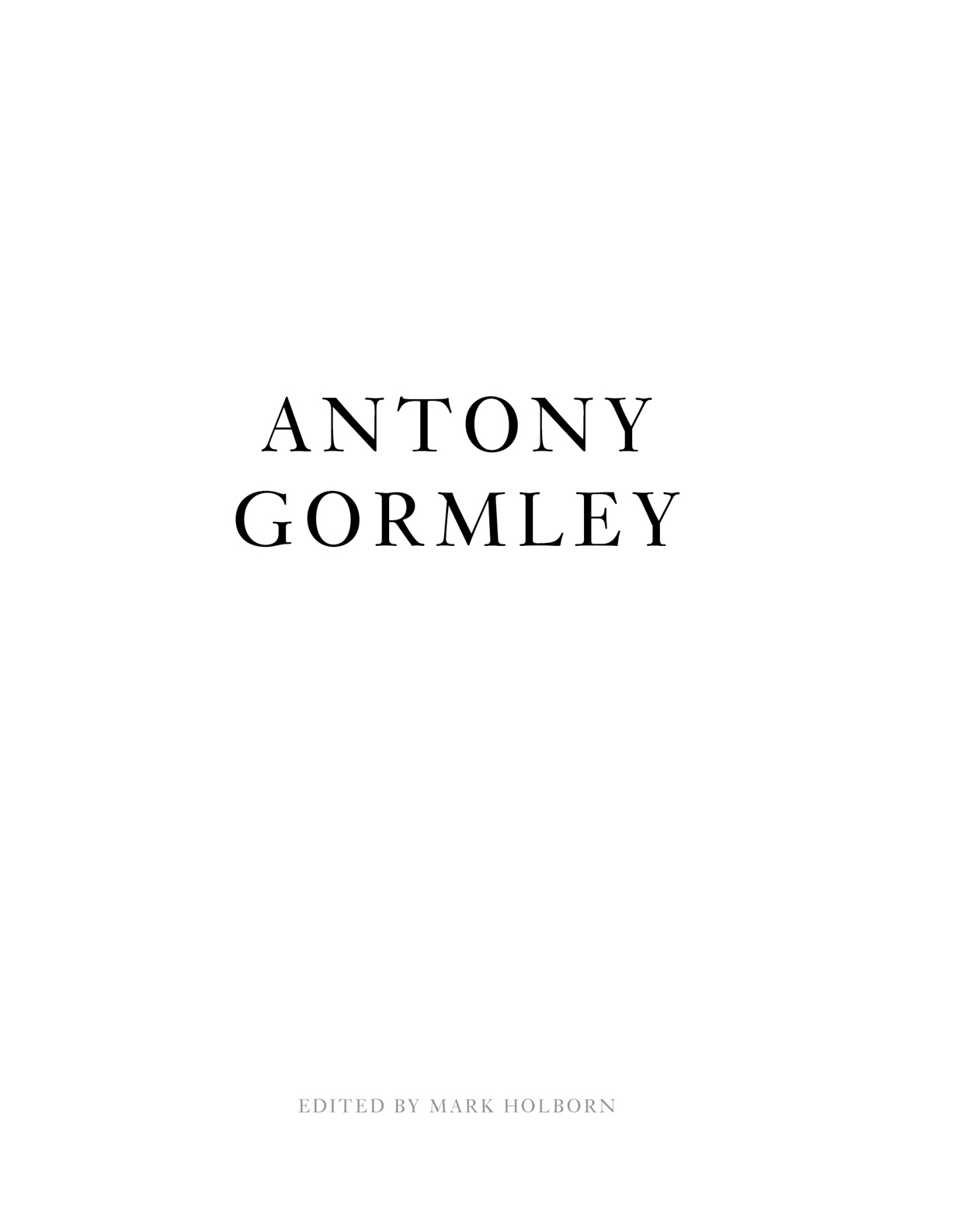
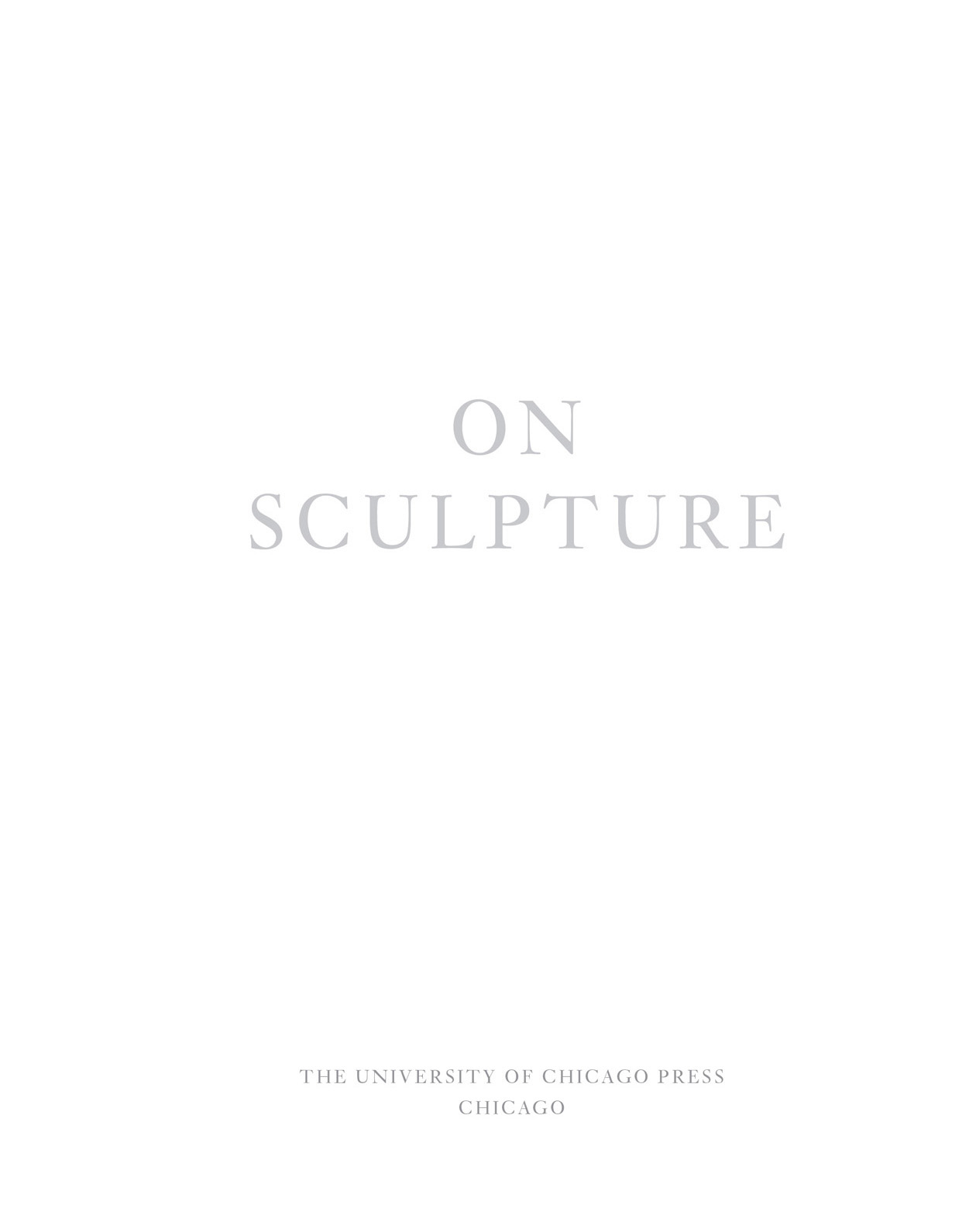
The text in this book is derived from a number of lectures and broadcasts given by Antony Gormley over the period 2009 to 2014. Full details of these are to be found on .
CONTENTS
BODY SPACE AND BODY TIME:
LIVING IN SCULPTURE
BODY SPACE AND BODY TIME:
LIVING IN SCULPTURE
In 1979 I went back to the place where Walter De Maria made his parallel chalk line drawings in Arizona. The work of De Maria, Robert Smithson and Richard Serra, and their place in American art, was critical for me, as was the engagement of body with material and place, irrespective of image-making. Here, I simply threw a hand-sized stone as far as I could, cleared all the stones within that radius, made a pile that I stood on, and then I threw them out again.
You can see from the photographs that I made a huge difference to the topography! You can just see, in the middle of this picture, where the pile was. Theres a kind of absent body there. All of these stones are radiating outwards only as far as I was able to throw. This is the action of a living, willing, feeling body on other bodies, which has made a displacement in space. I offer it to you as an image but for me it was an experience. The question of how the action of a human body, potentially, gives affordance to other bodies interests me. What kind of space mentally, physically, imaginatively does it transmit to others?

Re-arranged Desert, 1979
Temporary installation
Arizona, USA
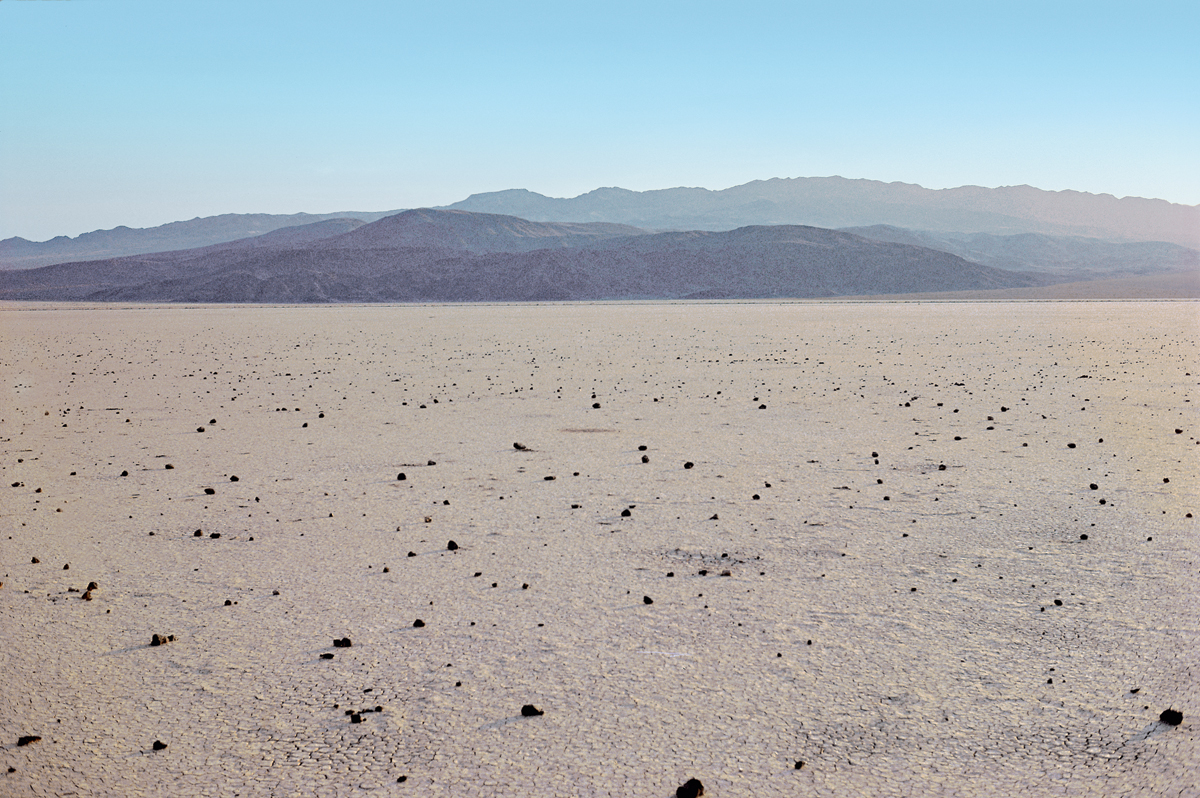
This is called Replaced Rock (1979). It was part of my degree show on leaving art school. The rock is 1.2 metres high and buried to half its height by a negative carving in the floor. Every 20 millimetres I registered this horizontal on the rock itself. I hoped that through the agency of this rupture, this activation of the floor and its emphasis on the horizontal, that we might feel our lives and our being in time.

Replaced Rock, 1979
Sarsen stone, 122 cm (48 in) height, embedded in floor 61 cm (24 in)
We have to test our environment, both built and elemental. We are the only animals that choose to live in an environment that is entirely articulated through Euclidean geometry, but at what cost?
This is Learning to Think (1991), sited in an old prison in South Carolina. The idea of breaking or rupturing the assumption about the permanence, or indeed the use value, of the architectural conditions in which we live, is a function of sculpture. Sculpture can no longer simply reinforce the known, it has to be a bridge to the unknown. It can no longer give us a sense of identity; by celebrating the past it has to be open to possible futures. You could say this is bilateral work. On one hand it recalls the lynchings that were so much a part of the life of this prison and the history of early America, but it is also about the potential of shared imagination: the realm of the mind that is free of the condition of a body in space. We exist in space, but space also exists in us.
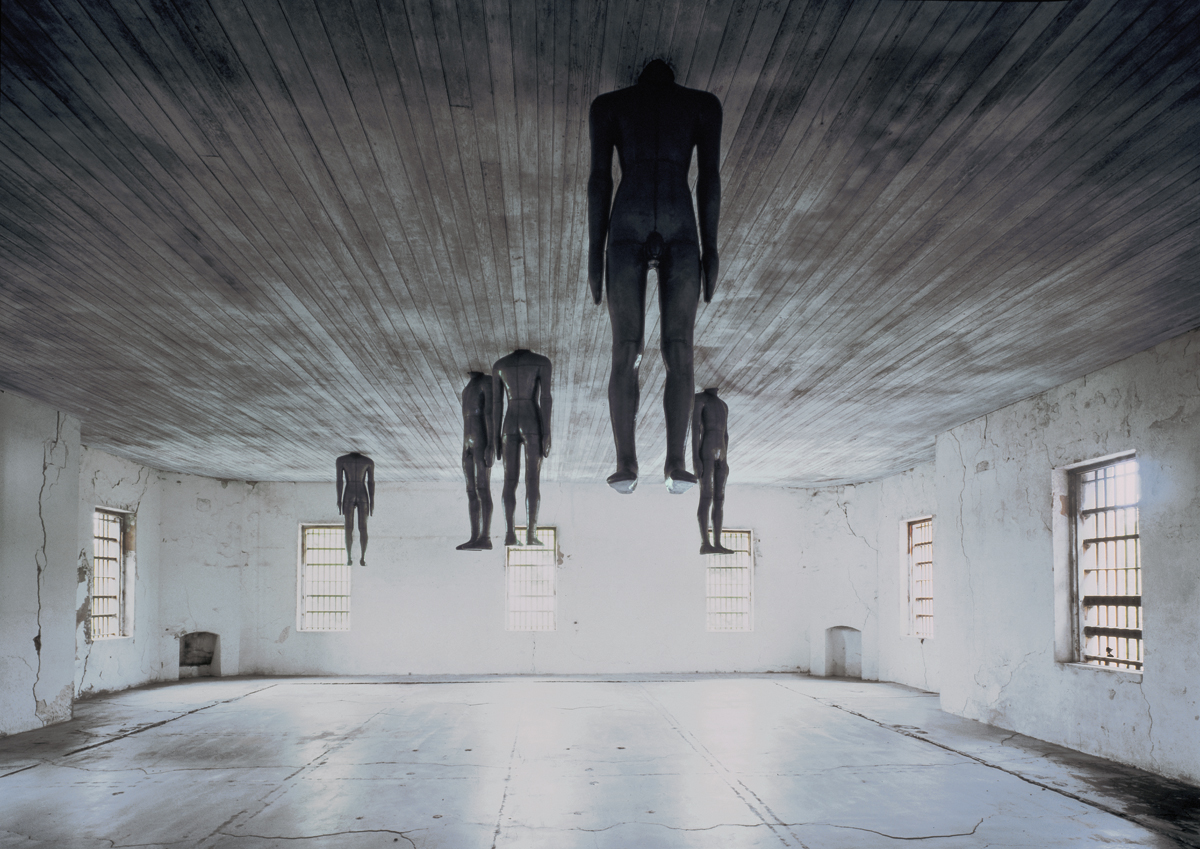
Learning to Think, 1991
Lead, fibreglass and air (total of 5 bodyforms), 173 56 31 cm (68 22 12 in), each Installation view, Old Jail, Charleston, USA
This is an early work, Full Bowl (197778). It sits in your hand. The space that is inside the tiny little bowl at the centre of the work has a resonance with the space that surrounds the bowl; it is a continuum. The work is an examination of the arbitrary nature of skins and edges. If art has been so obsessed with the way light falls on objects and rendering a cogent approximation of the way that this is conveyed to the retina (and lastly celebrated in Impressionism), then is there a way that art can go behind the skin of things? This examination of form and content, of regarding or managing to make an objective correlative account of the indeterminacy of edges, of limits, is very important to me throughout the work. I think we limit ourselves by being obsessed by the way things look.

Full Bowl 197778
Lead, 6 17 17 cm (2 6 6 in)
This three-piece work is Land, Sea and Air II (1982). It is an early attempt to try to make this memory of a real body connect, not to the white cube of a gallery or the context of an exhibition, but to the elemental world: to land, to sea, to air, and to link each of those elements with a physical posture and to link that physical posture to a perception. The work Land is a carapace pierced with holes at the ears, listening to the ground. Sea is the first work I made that opens the possibility of a sculpture as a body relating to the horizon. It has its eyes open, looking out to sea. Air is an empty plaster mould covered with lead, a body case with nostrils open. Lead is a wonderful insulator against liquid or sound leakage, against radioactivity. Each of these works shares a prominent repeated horizontal every 7 inches: there is a horizontal line (think of Replaced Rock), a repeated contour line that unites each of these pieces in a common spatial matrix. These two ideas not taking the skin of things as a limit, and the power of immersing a culturally made object in the elements I have put to work again and again.
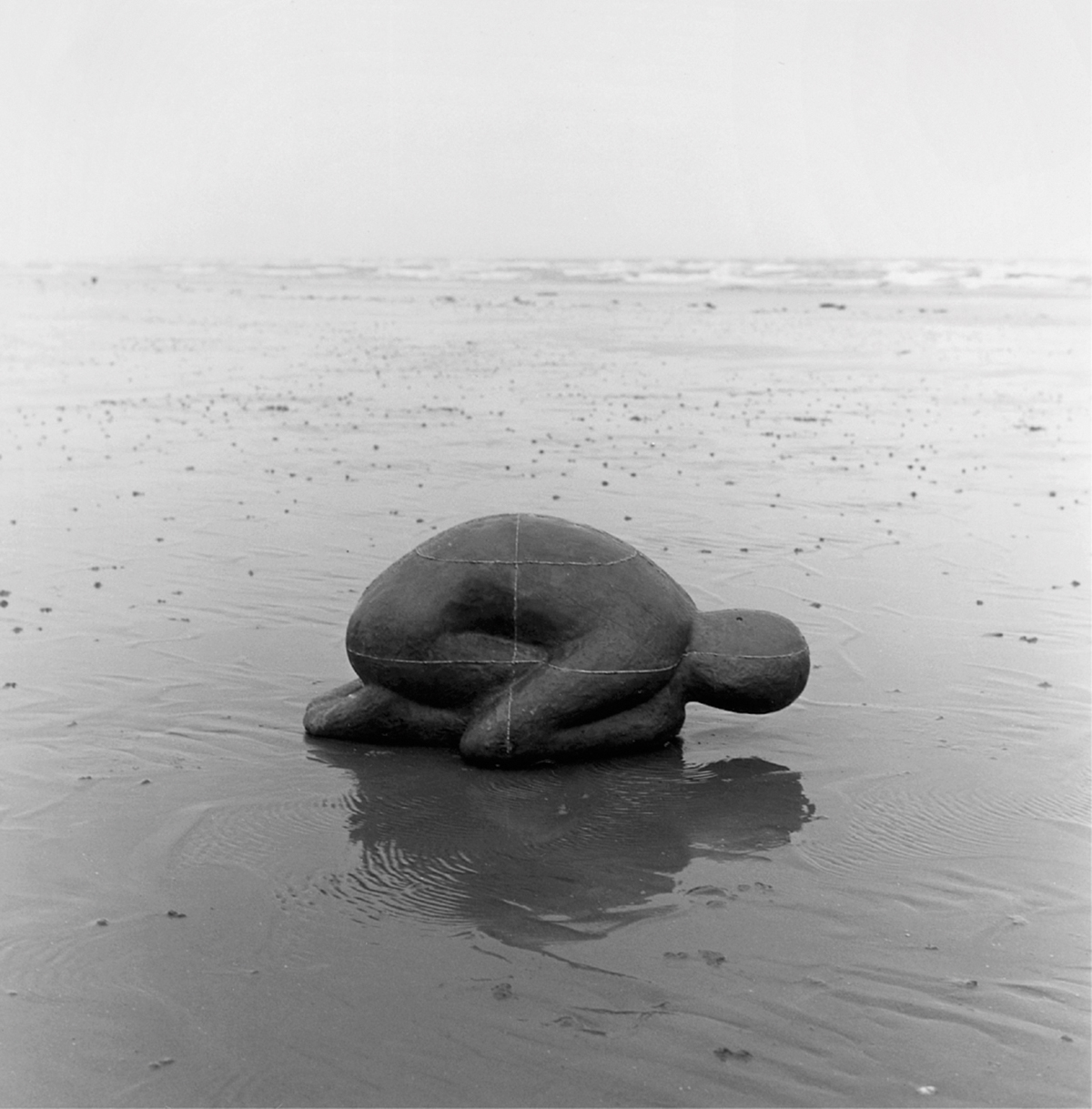
Land, Sea and Air II, 1982
Lead, fibreglass, Land (crouching): 45 103 50 cm (17 40 19 in)
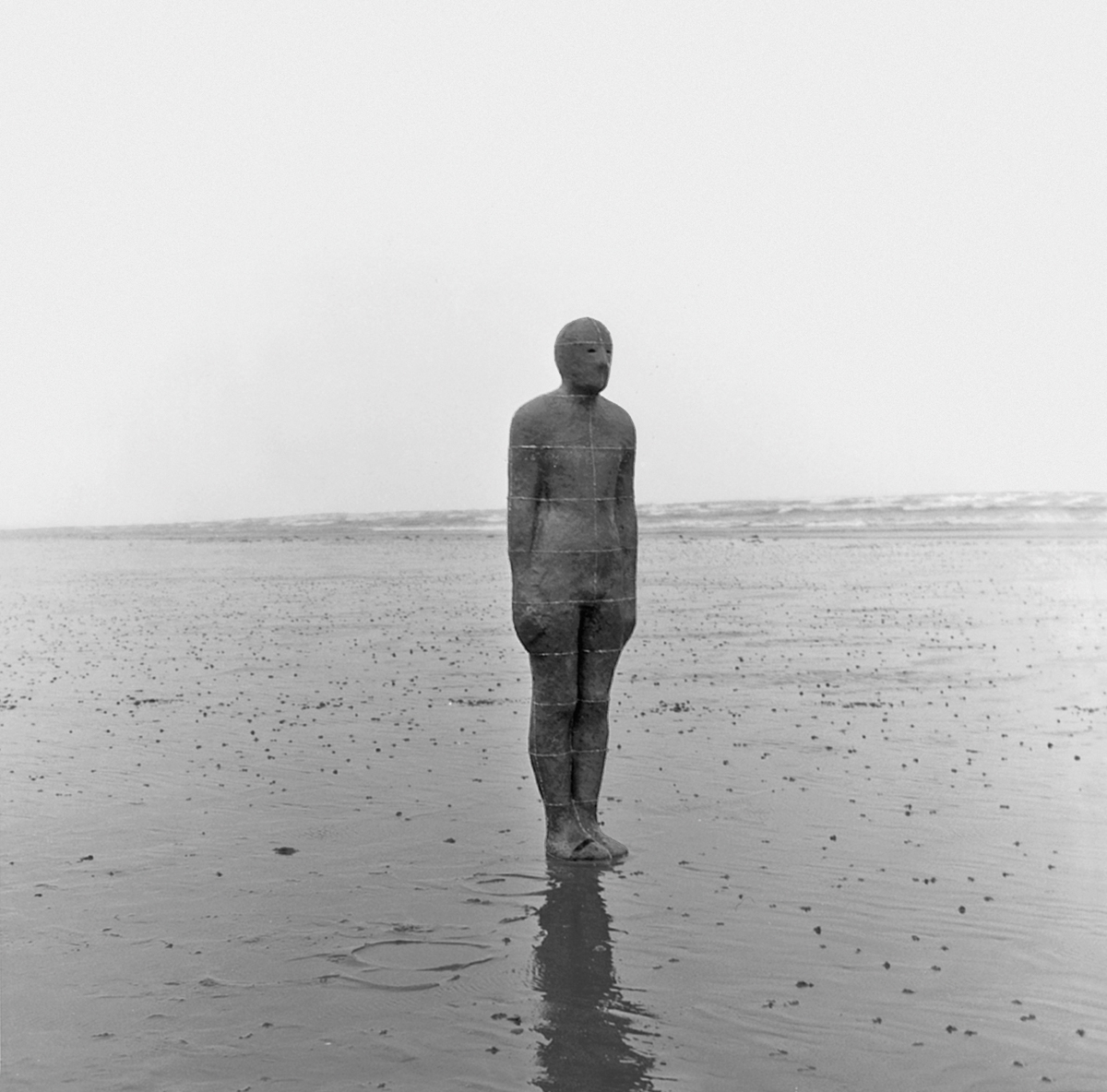
Land, Sea and Air II, 1982
Lead, fibreglass, Sea (standing): 191 50 32 cm (75 19 12 in)
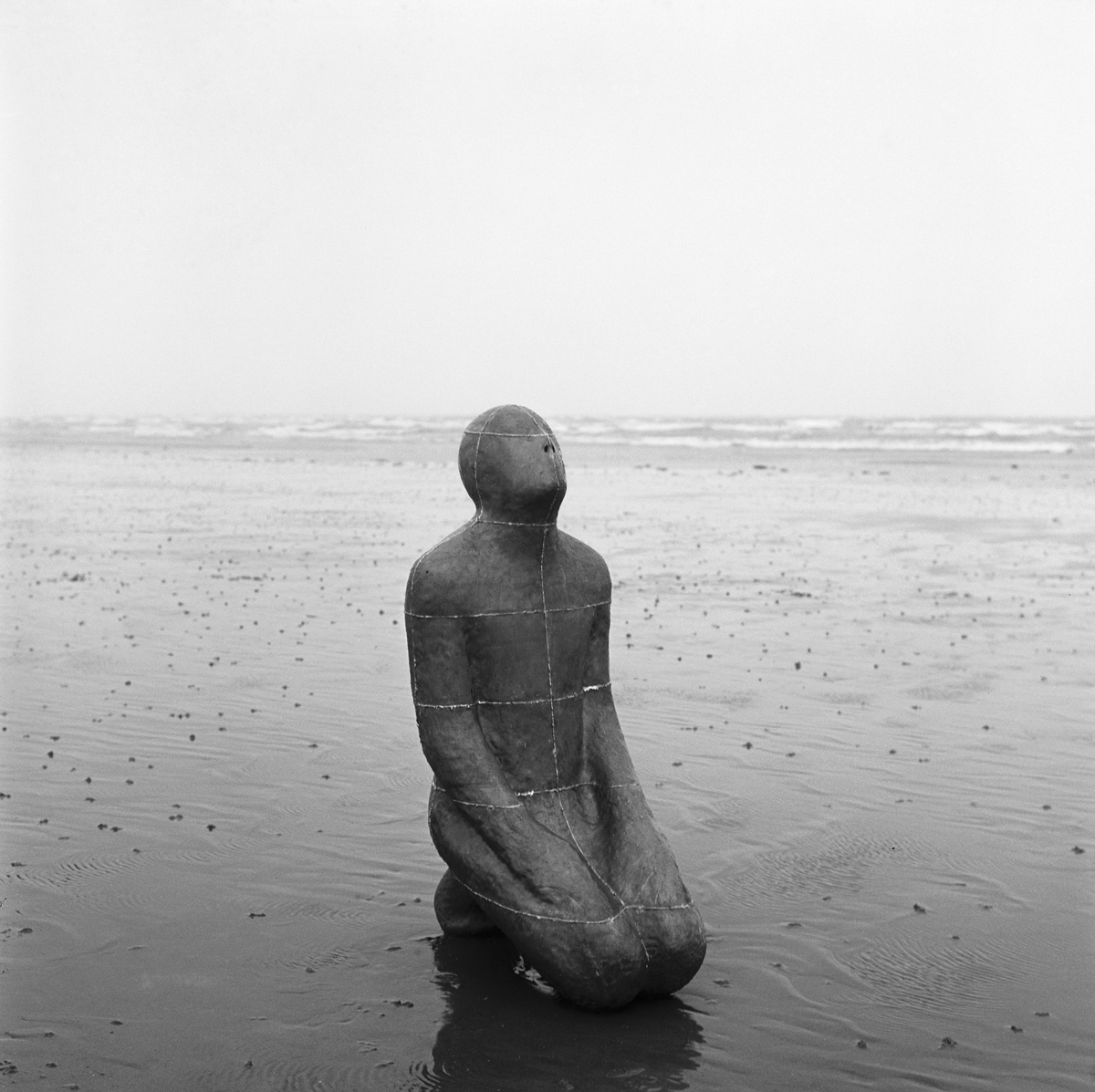
Land, Sea and Air II, 1982
Lead, fibreglass, Air (kneeling): 118 69 52 cm (46 27 20 in)
This is Lorraine Williams, a fifty-five-year-old Wangatha woman from Menzies in Western Australia, scanned by a digital body scanner and her body then reduced laterally by 66.66 per cent recurring. The breasts have been re-attached to the body by a bridge and, equally, the arms to the torso, but otherwise everything is the result of analytic process. Here is Lorraine in the scanner with her feet more or less parallel. I asked all the participants to do this so that they could concentrate on something and allow the set of their physical bodies to be transferred into a digital record. A physical rendering of the work was then placed in the middle of a chemical landscape, Lake Ballard in Western Australia, in 2003. This is another horizontal field, another abstract body field.
Next page
